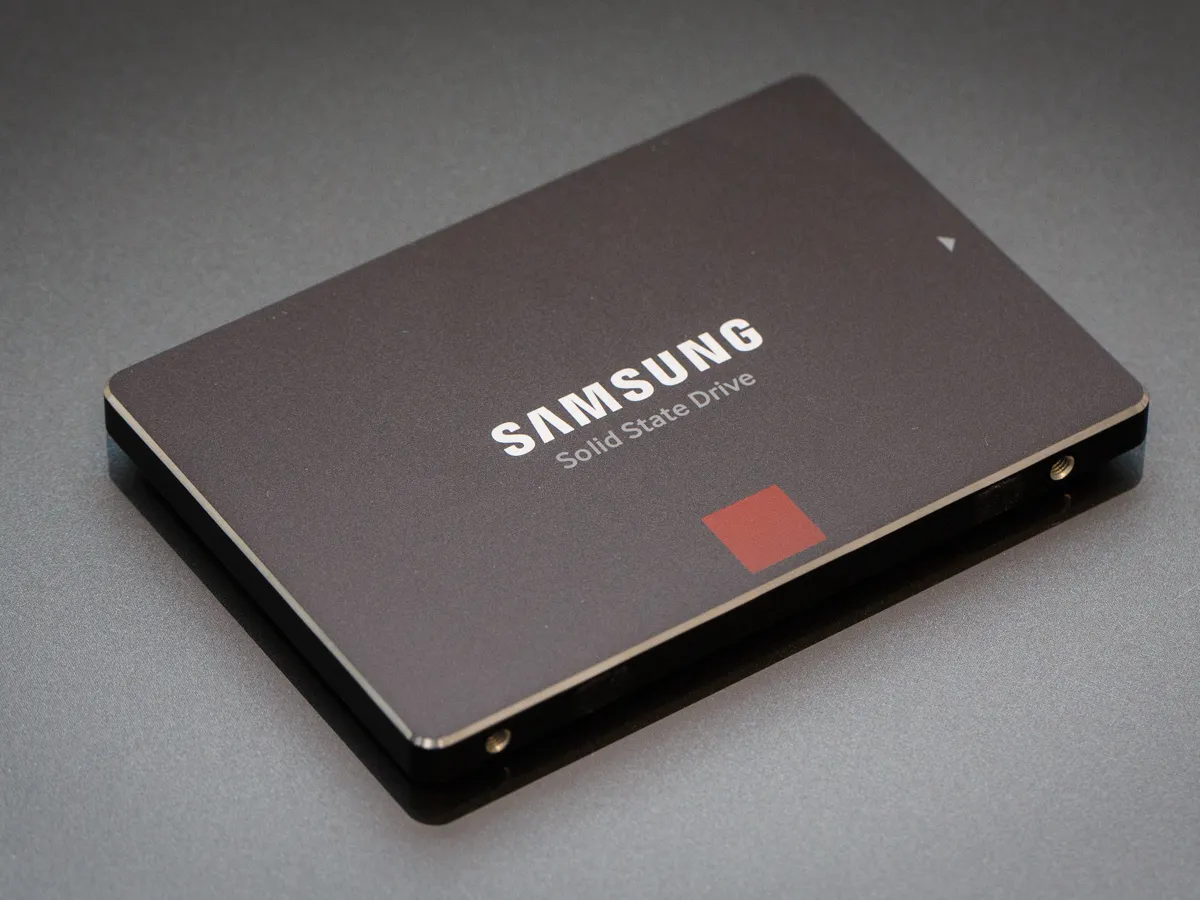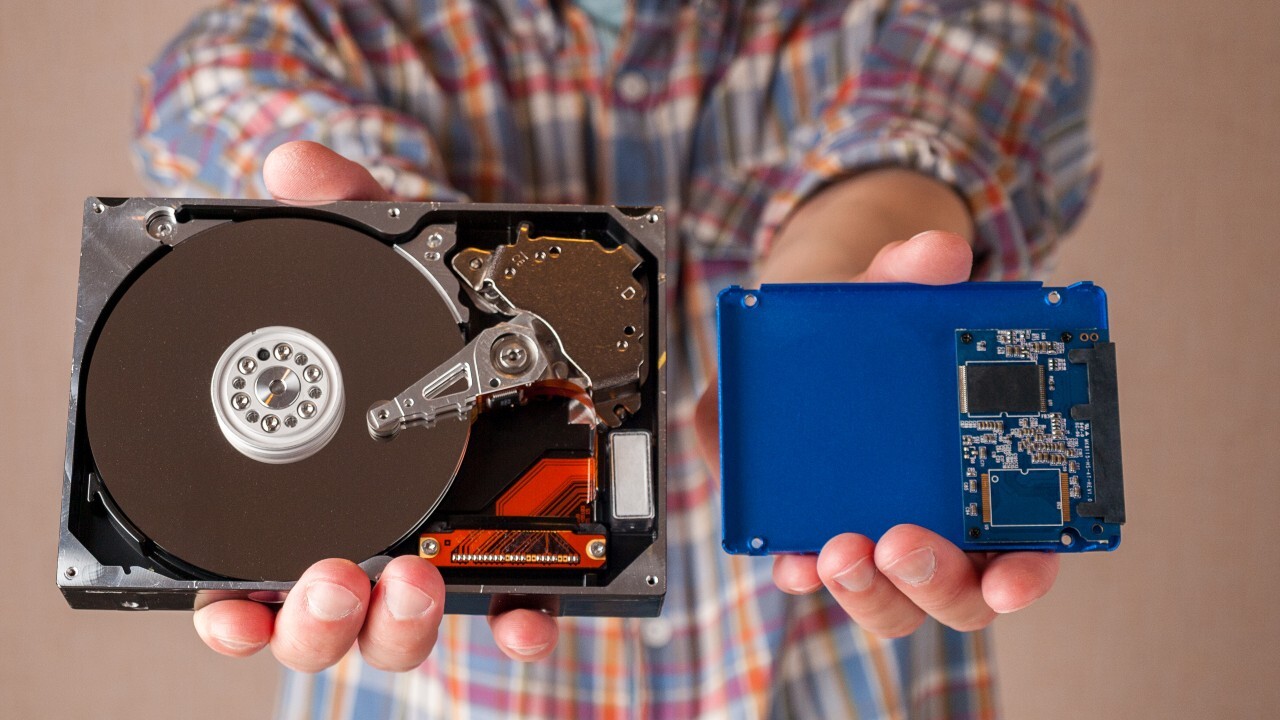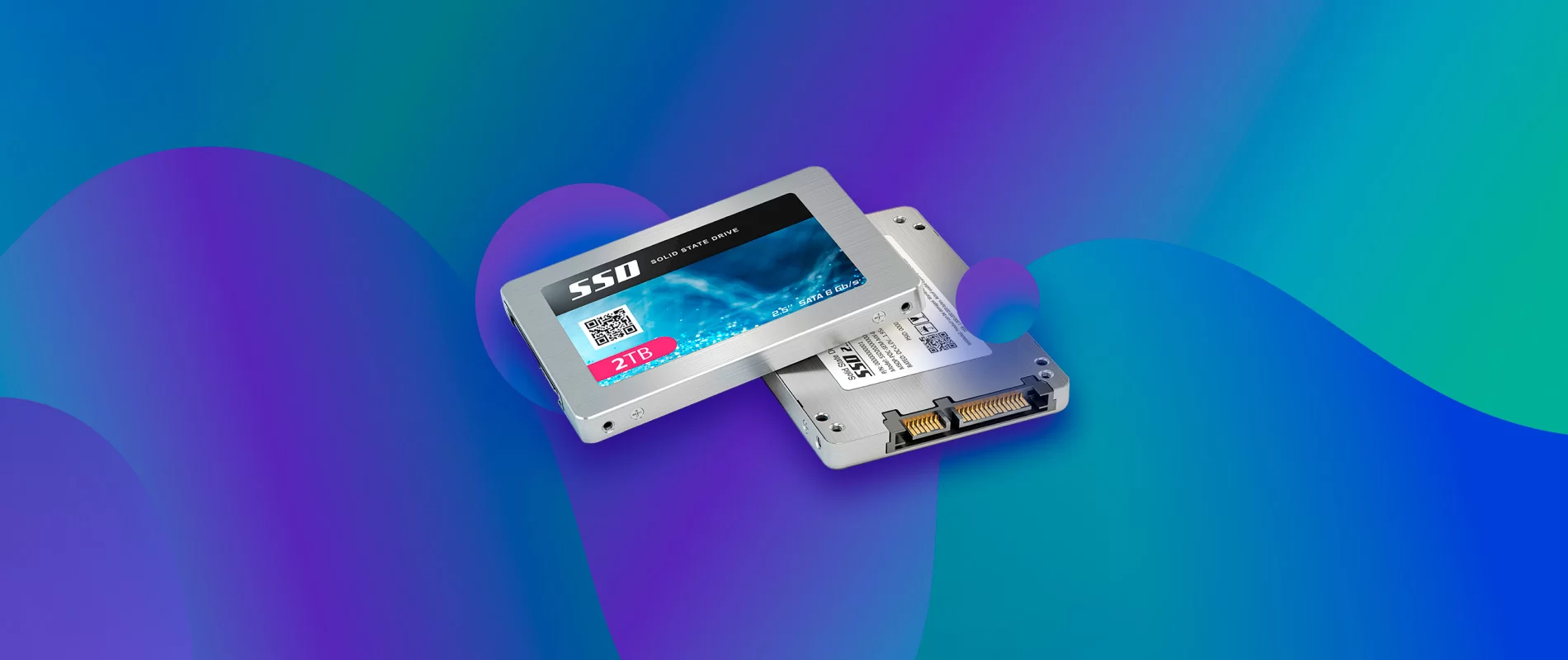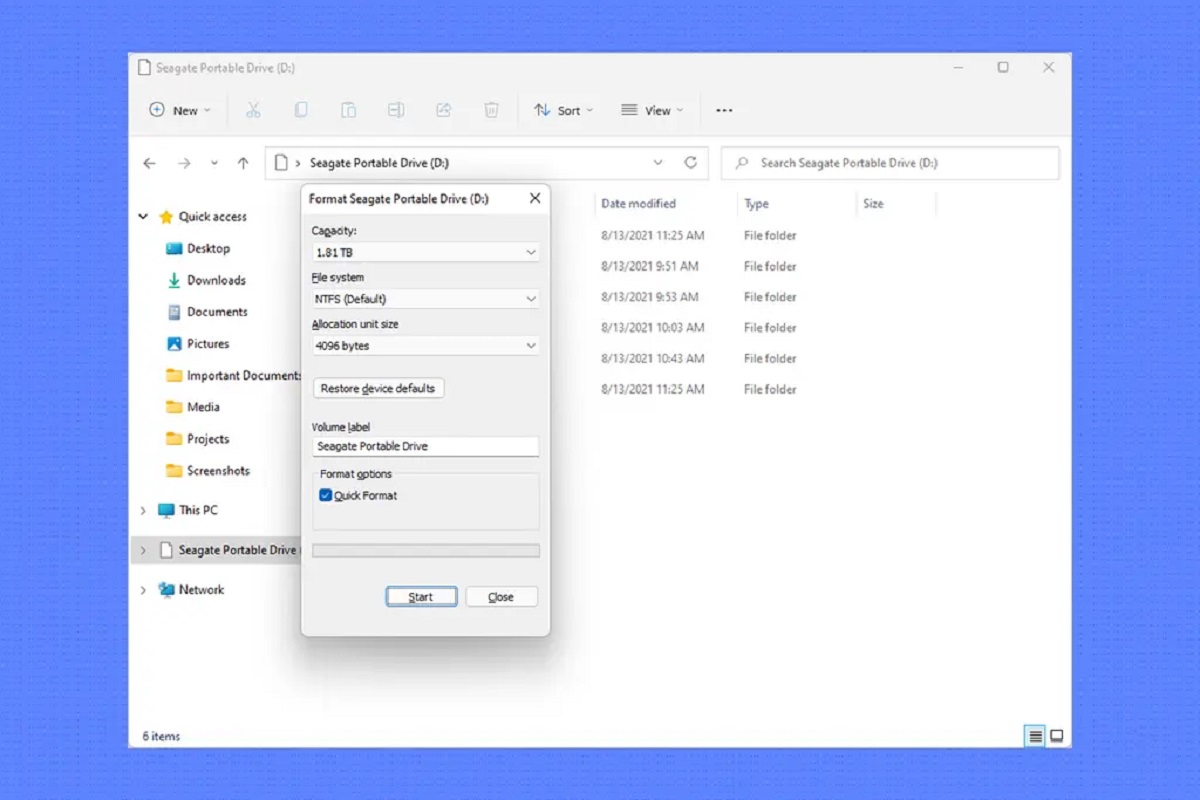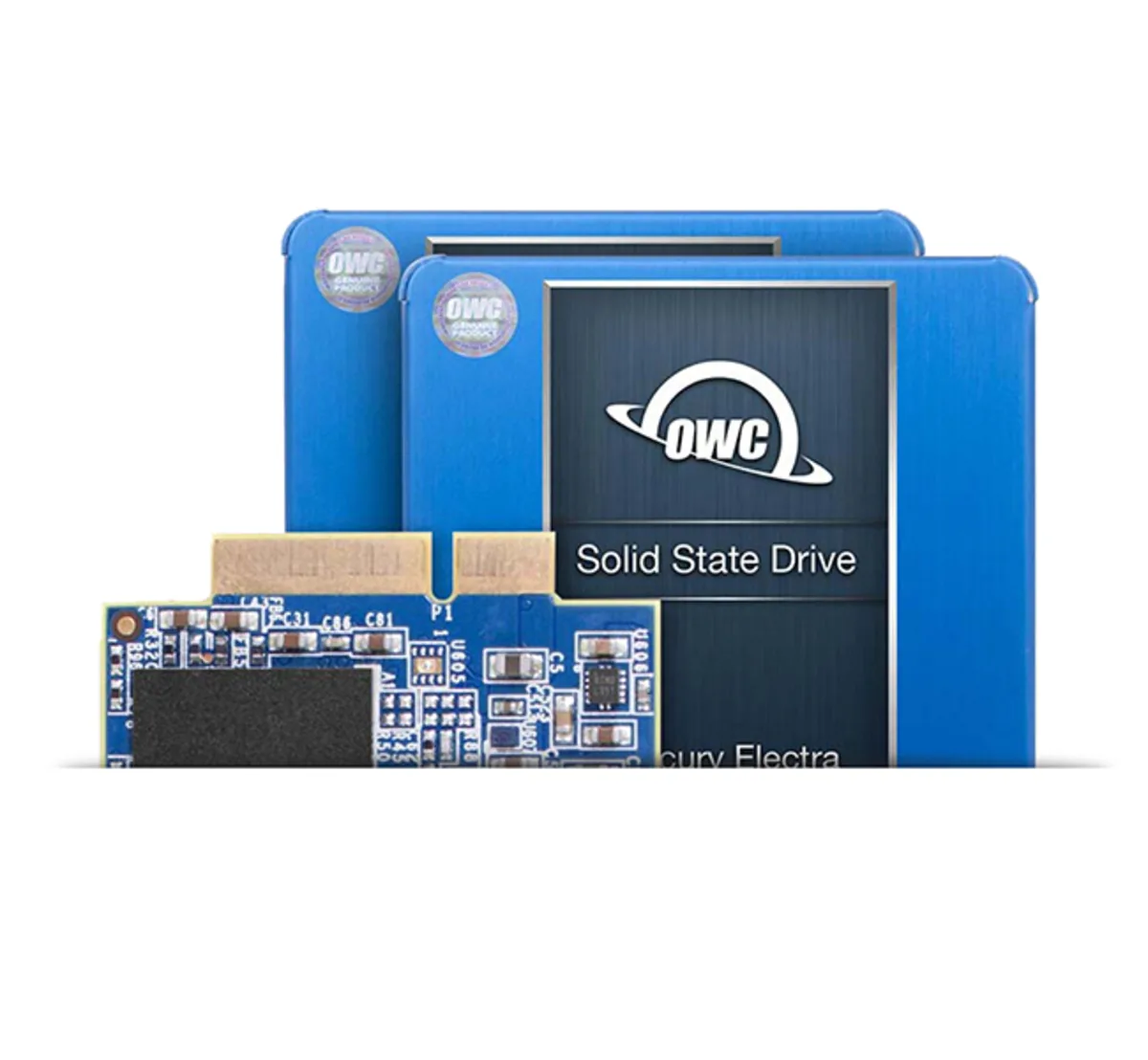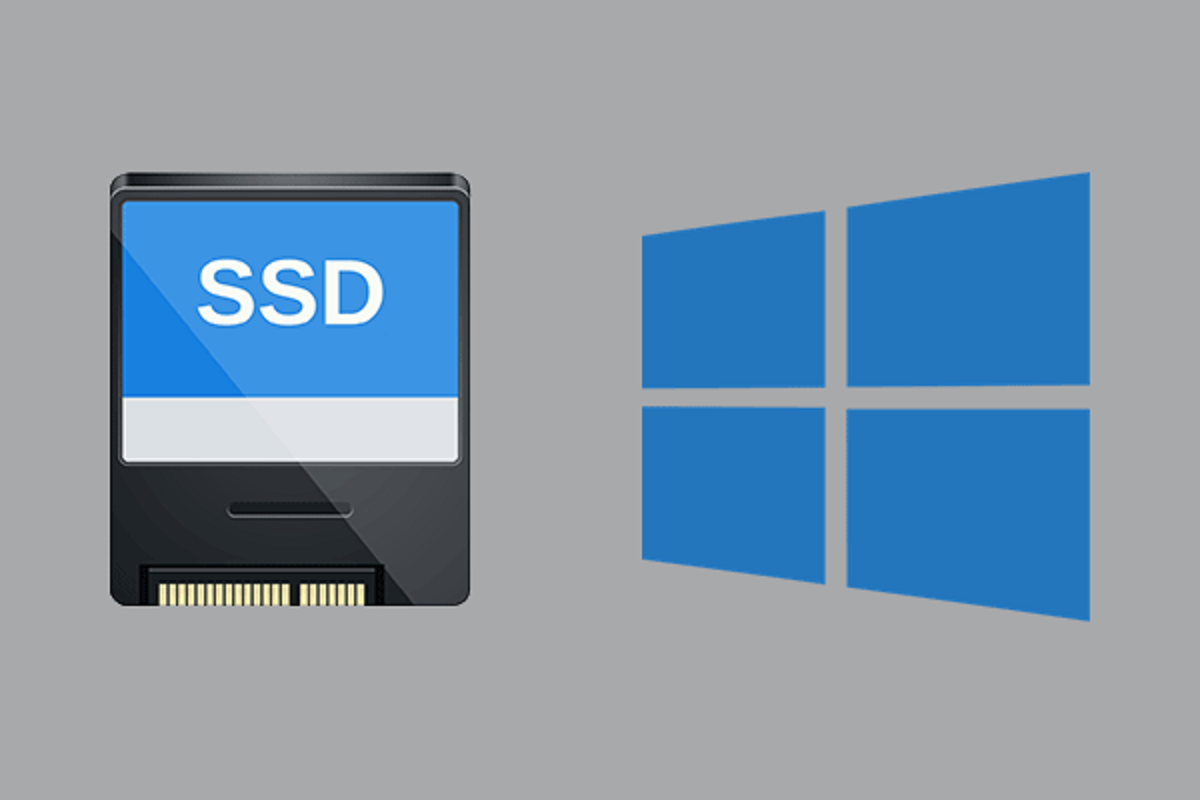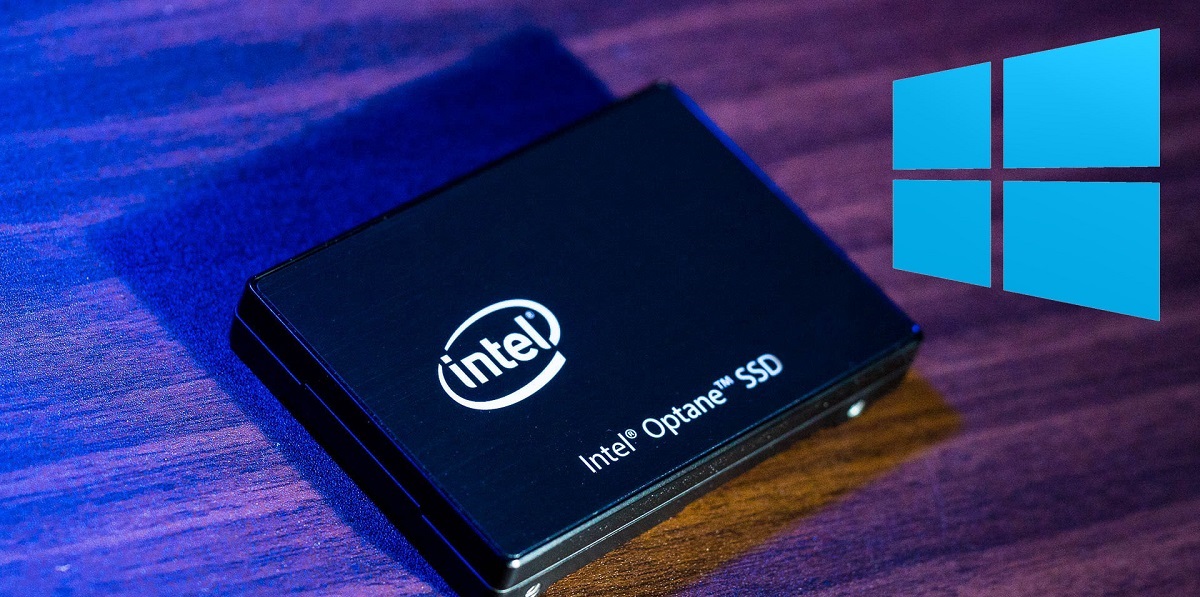Protecting Your SSD
Keeping your Solid State Drive (SSD) healthy and functioning optimally is crucial for maintaining the overall performance of your computer. Here are some essential tips to protect and ensure the longevity of your SSD:
1. Keep it clean: Just like any other component of your computer, your SSD needs regular cleaning. Ensure that the area around your computer is free of dust and debris to prevent them from entering the drive. You can also use compressed air to clean the SSD gently, avoiding any physical damage.
2. Avoid physical shocks: SSDs are more resistant to physical shock than traditional hard drives, but it’s still essential to avoid subjecting them to excessive vibrations or drops. Physical shocks can damage the delicate components inside the drive, leading to data loss or failure.
3. Use proper mounting: When installing your SSD, make sure it is securely mounted inside your computer case. Loose connections or improper mounting can cause the drive to disconnect or sustain damage. Follow the manufacturer’s instructions for installation to prevent any issues.
4. Protect from power surges: Power surges can be detrimental to your SSD’s health. To prevent damage, use a reliable surge protector or Uninterruptible Power Supply (UPS) that safeguards your computer from sudden power fluctuations. This will help protect your SSD and other components from potential electrical damage.
5. Maintain proper temperature: Excessive heat can impact the performance and lifespan of your SSD. Make sure your computer’s cooling system is functioning correctly and monitor your SSD’s temperature using software tools. If the temperature goes beyond the recommended range, consider adding additional cooling mechanisms or adjusting fan speeds to keep it within optimal limits.
6. Verify power supply stability: Inconsistent or unstable power supply can lead to data corruption and damage to your SSD. Use a power supply unit (PSU) that complies with the recommended specifications for your computer system. A stable power supply ensures the steady flow of reliable electricity to your SSD.
By following these guidelines, you can protect your SSD from unnecessary wear and tear, ensuring its longevity and optimal performance. Remember to regularly check for any firmware updates provided by the manufacturer to keep your SSD up to date with the latest improvements and fixes.
Keeping Your SSD Cool
Ensuring that your Solid State Drive (SSD) stays cool is essential for maintaining its performance and prolonging its lifespan. Here are some valuable tips to help you keep your SSD cool:
1. Proper ventilation: Adequate airflow is crucial for keeping your SSD cool. Make sure that your computer case has sufficient ventilation by ensuring that the fans are working correctly and that there are no obstructions blocking the airflow. Consider installing additional case fans or using liquid cooling systems for even better thermal management.
2. Avoid overheating: Excessive heat is one of the major causes of SSD failure. Monitor the temperature of your SSD using software tools and keep it within the recommended operating range. If the temperature reaches critical levels, take immediate action to cool down your system, such as reducing the workload or adjusting the fan speed.
3. Positioning your computer: The placement of your computer can also affect the temperature of your SSD. Keep your computer in a well-ventilated area, away from direct sunlight and other sources of heat. Additionally, avoid placing your computer on surfaces that can trap heat, such as carpets or blankets.
4. Thermal pads or heatsinks: To further dissipate heat from your SSD, consider using thermal pads or heatsinks. These cooling solutions can effectively transfer heat away from the SSD and distribute it throughout the system, reducing the overall temperature. Consult your SSD manufacturer’s guidelines to ensure compatibility and proper installation.
5. Optimize your system: Inefficient system operations can generate excessive heat and put additional strain on your SSD. Optimize your computer by reducing the number of background processes and unnecessary startup programs. Regularly clean up your hard drive by removing unwanted files and running disk cleanup utilities.
6. Maintain updated drivers: Keeping your system drivers up to date ensures that your computer can effectively manage power consumption and optimize performance, resulting in reduced heat generation. Check for driver updates on the manufacturer’s website or use driver update software to streamline the process.
By implementing these cooling strategies, you can protect your SSD from overheating and maintain its optimal performance. Remember to regularly monitor the temperature and take appropriate measures to cool down your system when necessary. Your SSD will thank you by delivering reliable and fast storage for years to come.
Updating Your Firmware Regularly
Regularly updating the firmware of your Solid State Drive (SSD) is crucial for maximizing its performance and ensuring compatibility with the latest technologies. Firmware updates often include improvements, bug fixes, and enhanced features that can significantly enhance the functionality of your SSD. Here are some essential points to keep in mind when updating your SSD firmware:
1. Check manufacturer’s website: Visit the manufacturer’s website to check for firmware updates specifically designed for your SSD model. Manufacturers periodically release firmware updates to address known issues and enhance the overall performance and stability of their drives.
2. Follow instructions carefully: Before proceeding with any firmware update, carefully read the instructions provided by the manufacturer. Each SSD model may have a specific update process, and it is essential to follow the instructions precisely to avoid any potential issues or data loss.
3. Backup your data: Firmware updates have the potential to affect the data stored on your SSD. It is vital to back up your data before proceeding with any firmware update. This precautionary step ensures that your valuable data remains safe in case of any unforeseen issues during the update process.
4. Ensure power stability: Firmware updates should always be performed with a stable power supply. Interruptions or power failures during the firmware update can result in a bricked SSD or loss of data. Connect your computer to an uninterruptible power supply (UPS) or ensure a stable power source before initiating the update.
5. Use manufacturer’s tools: Some SSD manufacturers provide dedicated software tools for firmware updates. These tools streamline the update process and ensure compatibility with your SSD model. Check if the manufacturer offers such tools and use them for a hassle-free and secure firmware update.
6. Verify successful update: Once the firmware update is complete, it is essential to verify its success. Check the manufacturer’s instructions or use their provided tools to confirm that the update was applied correctly. As an additional precaution, monitor your SSD’s performance after the update to ensure that everything is functioning as expected.
By keeping your SSD firmware up to date, you can benefit from improved performance, enhanced features, and compatibility with the latest technologies. Regularly check for firmware updates on the manufacturer’s website and follow the update process diligently to keep your SSD operating at its best.
Managing Your Storage
Effective management of your Solid State Drive (SSD) storage not only optimizes performance but also ensures that your system operates smoothly. Here are some essential tips for managing your SSD storage:
1. Regularly clean up your drive: Over time, your SSD can accumulate unwanted files, temporary data, and unnecessary software. Regularly clean up your drive by removing these files using built-in disk cleanup tools or third-party software. This frees up space and allows your SSD to operate more efficiently.
2. Uninstall unused programs: Identify and uninstall programs that you no longer use. Many programs leave behind residual files and folders even after they are uninstalled, which can take up valuable SSD space. By removing unused programs, you can free up storage and declutter your SSD.
3. Use selective syncing for cloud storage: If you use cloud storage services, consider using selective syncing rather than syncing all files and folders. This allows you to choose which files are stored locally on your SSD and which ones are only available in the cloud. By selectively syncing, you can conserve storage space on your SSD.
4. Move large files to secondary storage: Large files, such as videos or virtual machine images, can consume a significant amount of SSD space. Consider moving these files to secondary storage, such as an external hard drive or network-attached storage (NAS), while keeping frequently accessed files on your SSD for faster access.
5. Enable TRIM: TRIM is a feature that helps maintain SSD performance by efficiently managing deleted data. Ensure that TRIM is enabled on your operating system to allow the SSD to reclaim space from deleted files. This helps prevent performance degradation over time and maintains the overall speed of your SSD.
6. Regularly monitor storage usage: Keep an eye on your SSD’s storage usage to prevent it from reaching capacity. When your SSD is nearly full, performance may suffer, and the lifespan of the drive can be affected. Consider using storage management tools to monitor and track usage, allowing you to take proactive measures to prevent storage-related issues.
By effectively managing your SSD storage, you can optimize performance, increase available space, and ensure that your SSD operates at its best for a long time. Regularly clean up your drive, uninstall unused programs, and make use of selective syncing and secondary storage options to maintain a well-organized and efficient storage system.
Taking Care of Your Power Supply
Properly caring for your power supply is essential for maintaining the health and longevity of your Solid State Drive (SSD) and the overall stability of your computer system. Here are some crucial tips to take care of your power supply:
1. Use a reliable power supply unit (PSU): Investing in a high-quality PSU is vital for the smooth operation of your SSD. A reliable PSU provides stable and clean power to your system, reducing the risk of voltage fluctuations that can damage your SSD and other components. Choose a PSU from a reputable manufacturer that meets the power requirements of your system.
2. Avoid power surges and outages: Power surges and outages can have a detrimental impact on your computer system, including your SSD. To protect your SSD from power-related issues, use a surge protector or an Uninterruptible Power Supply (UPS). These devices help safeguard your system from sudden power fluctuations and provide backup power during outages, preventing data loss or damage to your SSD.
3. Check power ratings and connectors: When installing or upgrading your SSD, ensure that the power supply connectors and power ratings are compatible with your SSD and other system components. Mismatched connectors or insufficient power supply can lead to unstable operation or failure of your SSD.
4. Proper grounding: Properly grounding your computer system is crucial for safety and protection from electrical issues. Ensure that your system is grounded by using a three-pronged power outlet and a power cord with a grounding pin. A grounded system reduces the risk of electrical damage to your SSD and other components.
5. Keep cables organized: Proper cable management not only improves airflow but also reduces the risk of accidental disconnection or damage to your SSD. Keep your power cables and other cables neatly organized and secured to prevent any tension or strain on the connectors. This helps maintain a stable power supply to your SSD and reduces the risk of power-related issues.
6. Monitor voltage stability: Irregular or unstable voltages can adversely affect the performance and lifespan of your SSD. Monitor the voltage levels of your power supply using software utilities or hardware monitoring tools. If you notice significant fluctuations, it may indicate a problem with your PSU, and you should consider replacing it to prevent any potential damage to your SSD.
By taking care of your power supply, you can protect your SSD and other system components from electrical issues and ensure the smooth and reliable operation of your computer. Invest in a reliable PSU, use surge protectors or UPS, maintain proper grounding, and regularly monitor power supply stability to keep your SSD functioning optimally.
Avoiding Excessive Writes
Reducing excessive writes to your Solid State Drive (SSD) can help prolong its lifespan and maintain optimal performance. While SSDs are more durable than traditional hard drives, excessive writes can still contribute to wear and tear. Here are some effective ways to avoid excessive writes:
1. Limit unnecessary write operations: Be mindful of unnecessary write operations that can place an additional burden on your SSD. For example, avoid frequent defragmentation of your SSD since it doesn’t have any moving parts and fragmentation doesn’t impact performance significantly. Additionally, disabling unnecessary logging or caching operations can help reduce write activity.
2. Optimize your operating system: Adjusting the settings of your operating system can help minimize unnecessary writes. For instance, disabling or reducing the frequency of automatic updates can prevent frequent writes to the SSD. Additionally, disabling hibernation and reducing the size of the page file can reduce write operations.
3. Use system memory wisely: Utilize sufficient system memory (RAM) to reduce the necessity for frequent read-write operations on the SSD. More available memory allows your system to store data and frequently used programs, minimizing the need to write and access data from the SSD constantly.
4. Disable unnecessary services and startup programs: Unnecessary services and startup programs can contribute to increased write operations on your SSD. Disable any services or programs that you do not require, as they may continuously write logs or temporary files in the background. Regularly reviewing and disabling unnecessary services and startup programs can help reduce write activity and prolong SSD lifespan.
5. Opt for a secondary storage solution: If you frequently work with large files or perform intensive write operations, consider using a secondary storage solution such as a traditional hard drive or external SSD for those specific tasks. By offloading excessive write activity to a secondary drive, you can reduce the wear and tear on your primary SSD.
6. Monitor write activity: Keep track of the write activity on your SSD using monitoring tools or software provided by the manufacturer. This can help you identify applications or processes that are generating a significant amount of writes. By pinpointing the source of excessive writes, you can take the necessary steps to mitigate them and reduce the impact on your SSD.
By implementing these practices, you can minimize excessive writes to your SSD, extending its lifespan and optimizing its performance. Develop habits that prioritize reducing unnecessary write operations, optimize your operating system settings, and make use of secondary storage solutions when appropriate. These actions will help ensure the long-term reliability and efficiency of your SSD.
Properly Shutting Down Your System
Properly shutting down your computer system is essential for the well-being of your Solid State Drive (SSD) and overall system stability. Failing to shut down your system correctly can result in data corruption, file system errors, and potential damage to your SSD. Here are some important steps to ensure you shut down your system properly:
1. Close applications and save your work: Before shutting down your system, make sure to close all running applications and save any unsaved work. This allows the operating system to properly release resources and ensures that your data is safely preserved.
2. Use the proper shutdown procedure: To shut down your system, use the operating system’s built-in shutdown function. Avoid simply powering off your computer by pressing the power button or unplugging it, as this can abruptly terminate processes and potentially cause data loss or corruption.
3. Allow time for system processes to complete: After initiating the shutdown process, give your system time to complete necessary processes before turning off. Depending on the system configuration and the number of running applications, this may take a few moments. Patience during this time helps to ensure that all processes are properly terminated.
4. Avoid sudden power loss: Ensure that your system is connected to a reliable power source and avoid sudden power loss during the shutdown process. Power interruptions can cause issues with data writes and file system integrity, potentially leading to SSD corruption. Use an uninterruptible power supply (UPS) to safeguard against unexpected power outages.
5. Wait for SSD activity indicator: SSDs have an activity indicator light that shows read and write operations. After initiating the shutdown process, wait for the SSD activity indicator light to stop blinking or remain off. This indicates that all read and write operations have ceased, and it is safe to power off your system.
6. Avoid hot-plugging or disconnecting the SSD: Never disconnect the SSD from your system while it is powered on. Hot-plugging or disconnecting the SSD without proper precautions can result in data loss or SSD damage. If you need to remove or replace the SSD, ensure that your system is completely shut down before doing so.
By following these steps, you can safely shut down your system, protecting your SSD and preventing potential data loss or corruption. Properly closing applications, using the operating system’s shutdown procedure, allowing time for processes to complete, and avoiding sudden power loss are all important practices to ensure the health and integrity of your SSD and the overall stability of your computer system.
Regularly Checking for Errors
Regularly checking for errors on your Solid State Drive (SSD) is an important practice to maintain its health and reliability. By proactively identifying and resolving any issues, you can prevent data loss, improve performance, and prolong the lifespan of your SSD. Here are some effective ways to regularly check for errors:
1. Perform disk scans: Use the built-in disk scanning and repair tools provided by your operating system to check for errors on your SSD. These tools, such as CHKDSK on Windows or Disk Utility on macOS, can identify and fix file system errors, bad sectors, and other potential issues that may affect the performance and stability of your SSD.
2. Monitor S.M.A.R.T. data: SSDs support Self-Monitoring, Analysis, and Reporting Technology (S.M.A.R.T.), which provides valuable information about the health and performance of your SSD. Utilize S.M.A.R.T. monitoring software to regularly check the status of your SSD, including attributes like temperature, error rates, wear leveling, and reallocated sectors. Any significant deviations or abnormal values can alert you to potential problems.
3. Keep firmware up to date: Regularly updating the firmware of your SSD not only introduces new features and enhancements but also addresses potential bugs, performance issues, and compatibility problems. Check the manufacturer’s website for firmware updates specific to your SSD model and follow the provided instructions to ensure a successful update.
4. Utilize specialized diagnostic software: There are several third-party diagnostic software applications available that can provide in-depth analysis and testing of your SSD. These tools can help identify uncorrectable errors, perform stress tests, or provide detailed information about the health and performance of your SSD. Research and choose a reputable diagnostic tool that is compatible with your SSD.
5. Monitor system event logs: Check your system’s event logs on a regular basis to identify any reported errors related to your SSD. System event logs can provide valuable insights into any issues that may have occurred, such as unexpected shutdowns, I/O errors, or disk-related warnings. Investigate these errors promptly to address any potential problems.
6. Consider periodic professional assessment: If you have concerns about the health or performance of your SSD, or if you suspect the presence of errors despite regular checks, it may be worth seeking the expertise of a professional. A qualified technician or data recovery specialist can perform a thorough assessment of your SSD to diagnose and address any underlying issues.
By regularly checking for errors on your SSD, you can catch and resolve issues promptly, ensuring the continued reliability and optimal functioning of your SSD. Perform regular disk scans, monitor S.M.A.R.T. data, keep firmware up to date, utilize diagnostic software, monitor system event logs, and seek professional assessment when needed. With these measures in place, you can maintain the health and performance of your SSD and prolong its lifespan.
Performing Regular Maintenance
Performing regular maintenance on your Solid State Drive (SSD) is vital for optimal performance and longevity. By implementing routine maintenance tasks, you can ensure that your SSD operates smoothly, minimize potential issues, and extend its lifespan. Here are some essential maintenance practices:
1. Regularly clean up your operating system: Periodically clean up your operating system by removing temporary files, clearing caches, and deleting unnecessary files and folders. This helps free up disk space on your SSD, allowing it to operate more efficiently.
2. Update your operating system and drivers: Keeping your operating system and device drivers up to date is crucial for compatibility and security. Manufacturers release updates that often include bug fixes, performance enhancements, and support for new technologies. Regularly check for updates and install them accordingly to ensure your SSD is utilizing the latest optimizations.
3. Optimize your SSD with TRIM: TRIM is a command that improves the long-term performance of your SSD by allowing the operating system to inform the drive about which blocks are no longer in use. The SSD can then proactively optimize those blocks for faster write operations. Ensure that TRIM is enabled in your operating system to maintain optimal SSD performance.
4. Monitor storage health: Utilize software tools provided by the SSD manufacturer or third-party applications to monitor the health of your SSD. These tools can display important metrics such as wear leveling, remaining lifespan, and temperature. Regularly check these metrics to identify any potential issues or warning signs that may require attention.
5. Defragmentation considerations: Unlike traditional hard drives, SSDs do not require defragmentation as they do not suffer from performance degradation due to file fragmentation. In fact, frequent defragmentation can contribute to unnecessary write operations on your SSD. Avoid defragmenting your SSD unless specifically advised by the manufacturer.
6. Backup your data: Regularly backing up your data is crucial for safeguarding your files and protecting against data loss. Even with a reliable SSD, unforeseen circumstances can still occur. Regularly create backups of your important files on an external storage device or cloud-based storage to ensure that your data is protected in case of SSD failure or other unexpected events.
7. Avoid extreme temperatures: Extreme temperatures can have a negative impact on SSD performance and lifespan. Keep your system in a well-ventilated environment and ensure that cooling mechanisms, such as fans, are functioning properly. Avoid exposing your SSD to excessive heat or cold to maintain its optimal performance.
By performing regular maintenance on your SSD, you can optimize its performance, extend its lifespan, and decrease the likelihood of encountering issues. Regularly clean up your operating system, update your software and drivers, optimize your SSD with TRIM, monitor storage health, be cautious about defragmentation, backup your data, and maintain an appropriate operating temperature. These maintenance practices will help ensure that your SSD operates smoothly and reliably for years to come.
Backing Up Your Data
Backing up your data is crucial to ensuring the safety and security of your files, including those stored on your Solid State Drive (SSD). SSDs, like any other storage medium, can experience failures or data loss due to various factors. Implementing a robust backup strategy helps protect against these risks and provides a way to recover your important files. Here are some key points to consider when backing up your data:
1. Choose a backup solution: There are several backup solutions available, including external hard drives, network-attached storage (NAS), and cloud-based backup services. Assess your needs and budget to determine the most suitable option for your requirements. Cloud-based backup services offer the advantage of off-site storage for added protection against physical damage or theft.
2. Determine what to back up: Identify the files and folders that contain the most critical or irreplaceable data. These may include personal documents, photos, videos, and important work-related files. Prioritize backing up these files regularly to ensure their safety.
3. Set up automated backups: Automating your backups ensures that your data is consistently and regularly backed up, reducing the risk of overlooking important files. Schedule automated backups at convenient times or use continuous backup solutions that automatically capture any changes or additions to your files.
4. Use redundant backup methods: Employing multiple backup methods adds an extra layer of protection in case one backup system fails. Consider implementing a combination of on-site and off-site backups to mitigate risks like hardware failure, natural disasters, or theft. For example, you could have an external hard drive backup for quick on-site recovery and utilize a cloud-based backup service for off-site redundancy.
5. Test your backups: Regularly test your backups to ensure their integrity and verify that you can successfully restore your files if needed. Performing periodic test restores ensures that your backup system is functioning correctly and that your data is recoverable.
6. Update your backups regularly: As you create new files or modify existing ones, remember to update your backups accordingly. Incorporate regular backup intervals into your routine or consider using real-time backup solutions that automatically capture changes in real-time.
7. Keep multiple versions of your files: Some backup solutions allow you to keep multiple versions of your files. This feature enables you to restore previous versions of files in case of accidental deletion, file corruption, or the need to retrieve an earlier version of a document.
8. Encrypt your backups: To protect your sensitive data, ensure that your backups are encrypted, especially if you choose cloud-based backup services. Encryption adds an extra layer of security and ensures that your data remains confidential and protected from unauthorized access.
By implementing a robust backup strategy and following these best practices, you can safeguard your data from loss or corruption. Regular backups give you peace of mind, knowing that your files are protected even in the event of SSD failure, accidental deletion, or other unforeseen circumstances.







